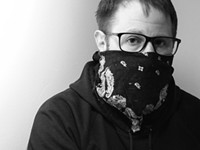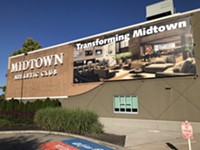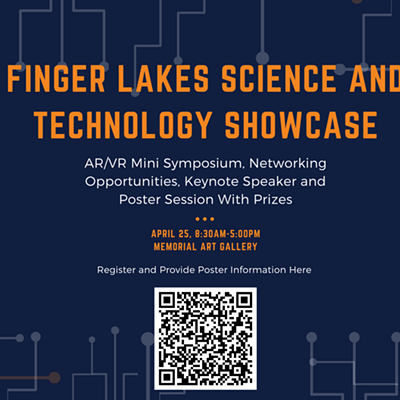[
{
"name": "500x250 Ad",
"insertPoint": "5",
"component": "15667920",
"parentWrapperClass": "",
"requiredCountToDisplay": "1"
}
]
Sign language has always been a means to an end for me.
The first time I learned it I was 10, and I used it to advance my goal of total domination of my little brother. One March morning I woke up with laryngitis. At the time I had no idea it would last a week, but I couldn't bear to go even a day without bossing him around.
I studied an American Sign Language alphabet card, and by the time my brother returned home from school I could fingerspell my name, his name, "shut up," "yes," "no," "get me," and all the nouns I might need, like "candy" and "water." By evening on that first day, he, too, could fingerspell and, more importantly, read my signs. I ran my empire from bed. When he complained about his servitude I pretended I was deaf.
The second time I learned to sign I was in eighth grade. I spotted a new kid in school who met my two main criteria --- he was cute and tall enough so that if we hugged or slow danced I wouldn't look like a hunchback with a boy attached to my chest. That he was deaf was of little significance.
I enrolled in the school's ASL class and as soon as I could sign "hi," "do you have a light?" and "first and second base only," I had a boyfriend. Later I learned, "can you do my math homework?" and "no, not third base, really, I mean it." Even though he couldn't hear music, he liked to dance. At school dances he moved along with the beat that shook the cafeteria floor.
The third and most recent time I learned sign language was a couple of years ago, when we moved to Rochester and met our deaf neighbors. They were funny and nice and the only other Democrats on our street. I wanted to befriend them and knew that even the best lip readers only comprehend a fraction of what is said. Plus they were expecting, and since there was a chance the baby might be deaf, I wanted to teach my kids to sign.
We have one of the largest deaf populations in the country, so most hearing people know someone who is deaf or hard of hearing. We're immersed, whether we realize it or not, in a rich deaf culture, only some signs of which are visible --- like the interpreters at lectures and concerts.
Even before I relearned ASL the third time it was hard for me to tear my eyes away from interpreters. They were really challenged, for example, by the odd poetry and unexpected inflections of a F'loom concert. At the Vagina Monologues the audience watched interpreters sign "vagina" --- a diamond made from forefingers and thumbs held down there --- so many times that if all of Rochester made the same sign it could have been "vagina."
In my sign classes I met people in social service jobs, people with deaf family members, college students starting the long and difficult career path to becoming interpreters, and a sweet couple of seniors who were learning to sign because the husband was rapidly losing his hearing.
My first teacher was fascinating, introducing me to the world of deaf activism. He screened a videotape about the riots at Gallaudet University, a school for deaf and hard of hearing people, which caused the removal of a hearing president in favor of a deaf one in 1988. He said some deaf couples hope for deaf children. And he hinted that perhaps it was hearing, not deafness, that was the disability. Few languages classes teach communication and subversiveness.
Politics aside, for a hearing person ASL is pretty liberating. Because the syntax and structure are different from English it's tricky at first, but overall it's a more economical language. For example, "I am hungry" becomes "Me hungry."
Like all languages, ASL requires practice. And since many signs use similar hand shapes, mistakes can result in comical misunderstandings. The signs for "shy" and "prostitute" are nearly identical, as are the signs for "lesbian" and "lemon." Luckily, ASL also relies heavily on facial expressions, body language, and eye contact. It's a wonderful kind of acting, if you can get the hang of it.
Some signs are funny. The sign for "boring," as in dull, is to take your finger and push it into the side of your nose while twisting it, as if you're literally boring your finger in. To sign "Pittsford," put your nose in the air and flick it with your index finger like a snob. "Kodak" has a sensible sign --- make a "k" and put it together with the sign for "picture" --- but the sign for rival Polaroid is a double-edged sword. To make the sign for "Polaroid," push your nose with your index finger as if it's a button and then stick out your tongue. This sign captures the way a photo slides out of the front of some Polaroid cameras, but loyal Kodak fans see it differently --- they like sticking their tongues out at the enemy.
When I see our deaf neighbors--- who are now our friends --- we smile and hug. Then the wife and I will "talk." These conversations, while lively, rely more on her sense of charity than my ability to form meaningful signs. I get confused. Does a hooked index finger mean "need" or "question"? Sometimes I'll just use the first letter of a word and my friend guesses my meaning.
A little sign language in the wrong hands is a dangerous thing, however. Last spring, in a bungled attempt to ask about her trip to Martha's Vineyard, I used the "v" symbol and made the shape of an island. Later I realized I had said something along the lines of, "I need you, when go Martha's vagina?"
Speaking of...
-

Calendar preview: Open and Out
Oct 8, 2020 -
The XX Files
Jun 1, 2005 -
The XX Files
Mar 30, 2005 - More »
Latest in Columns
More by Jennifer Loviglio
-

Silent (politically correct) night
Nov 15, 2006 -
The XX Files
Nov 15, 2006 -
Escape to Jennitopia
Nov 1, 2006 - More »





